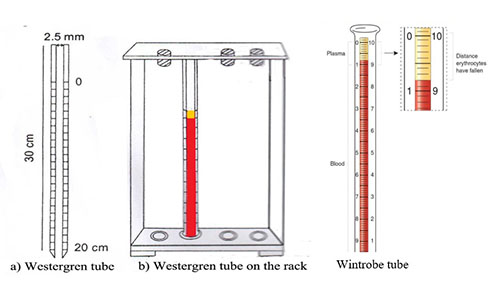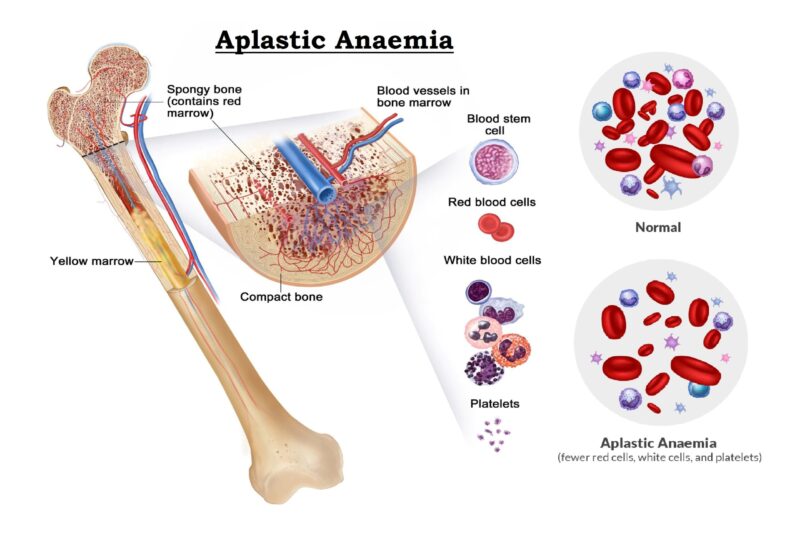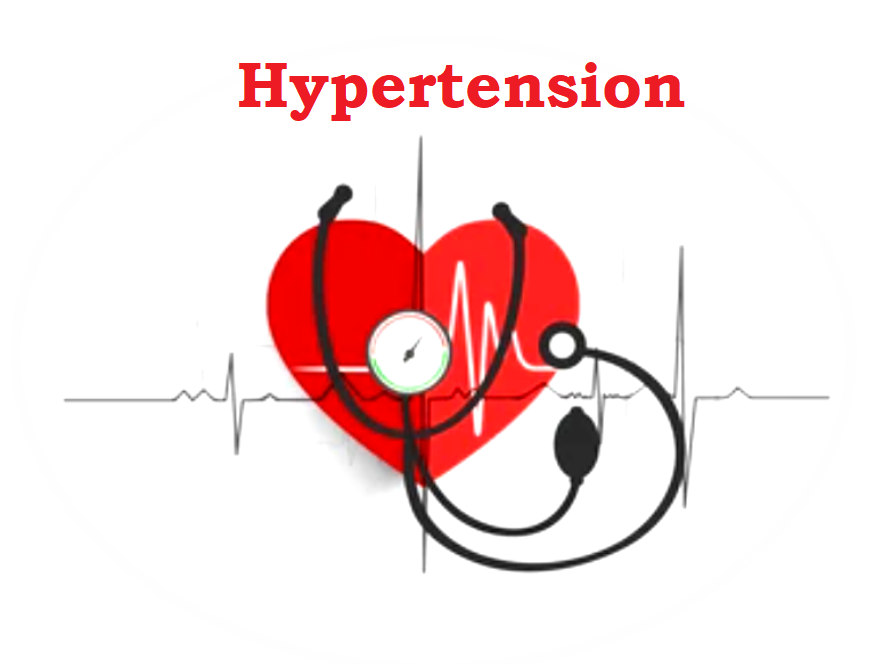Erythrocyte Sedimentation Rate (ESR) : Significance, Mechanism, Influencing factors, Biological Reference & Procedure
The Erythrocyte Sedimentation Rate (ESR) test is a commonly performed in the Hematology laboratory for the prognostic purpose that may indicate and monitor an increase in inflammatory activity within the body caused by one or more conditions such as chronic inflammatory disease, autoimmune disease, anemia, infections, and malignancies. The ESR test is not specific for any single disease but is used in combination with other tests to determine the presence of increased inflammatory activity. The ESR has long been used as a "sickness indicator" due to its reproducibility in both hematological and non hematological. When anticoagulated blood is allowed to stand undisturbed condition for a period of time, the erythrocytes tends to sink to the bottom. Two layers are formed, the upper plasma layer and lower sedimented erythrocyte layer. The rate at which the red cells fall is knows as Erythrocyte Sedimentation Rate (ESR).
Mechanism of sedimentation of RBCs :
The ESR is consist of mainly four phases. These are aggregation, rouleaux formation, sedimentation and packing.
- 1st 15 minutes : Phase of minimum fall : The red cells suspended in a column of citrated blood undergo rouleaux formation in the plasma and become heavier. Sedimentation in this phase is very low.
- 2nd 15 minutes : Phase of moderate falling : Fibrinogen and globulin in the plasma develop fine threads and build up a network. The rouleaux of the red cells get tapped in the mash of network and become heaviest. It starts to settle quickly.
- 3rd 15 minutes : Phase of maximum fall : In this phase the rate of fall of the protein network with red cell mass is maximums.
- 4th 15 minutes : Phase of packing : In this phase the sedimented red blood cells and protein mass undergoes packing to the bottom.
Factors influencing ESR :
- Plasma : RBCs carry a negative electronic charge, where as plasma carries a positive charge. Any conditions in plasma that increases it positive charge; increase rouleaux formation and increases ESR by lengthing stage-I (aggregation and rouleaux formation.). Fibrinogen, globulin and cholesterol accelerate while albumin retards sedimentation. Hence, ESR is increase in any conditions that increases fibrinogen (tissue break-down as in infection and tuberculosis) or globulin (rheumatic fever, multiple myaloma and kala-azar).
- Red Blood Cells : Increase in blood cell counts as in Polycythemia retards sedimentation due to the jostling (or pushing one another) effect on the cells. Low blood cell count in anaemia tends to increase ESR. However, altered shaped of the RBCs as in Sickle cell anaemia and microcytic hypochromic anaemia tends to prevent rouleaux formation and decrease ESR. In Sickle cell anaemia the red cell resist to rouleaux formation that’s why ESR is decreased
- Physiological Variation : ESR is low in infants, increase upto puberty, and then decreases upto old age when aging it increased. ESR is greater in women then men. It increases after the third month of pregnancy and returns to normal by about third or fourth weeks after delivery (postpartum).
- Temperature of the environment : ESR is increases when temperature of the environment is increase. It is directly proportional to the temperature.
- Difference between specific gravity of Red blood cell and plasma.
- Diameter and length of the ESR tube.
- Position of the ESR tube : Normally ESR tube is placed vertical position (90°). If the tube is placed slightly slant, ESR is increases. For every 3° of the tube position ESR is increase approximately 30 mm.
Clinical Significance :
ESR has prognostic value. Changes in ESR are not diagnostic for any specific disease. Elevated ESR (as in tuberculosis, rheumatoid fever, multiple myaloma, kala-azar etc.), if returns to normal suggests improvement in clinical course.
As a nonspecific test, the ESR has inherent limitations in its clinical utility; however, in some clinical contexts the ESR may provide valuable information for screening, diagnosis, and monitoring disease activity or therapeutic response.
- Screening :
- Asymptomatic Patients : Although the ESR has been used in the past as a general screening test, clinical trials have not demonstrated any value of the ESR for screening asymptomatic individuals. Not only is the number of abnormal results low, but also the abnormal results in most cases return to normal over several months without any significant diagnosis being made. A complete history and physical examination is a much better screen than an ESR.
- Nonspecific Symptoms : An elevated ESR in the presence of nonspecific symptoms may help justify or direct further evaluation because moderate elevations of the ESR are common in infections, inflammatory diseases, and neoplasia. A normal ESR, however, does not exclude active disease.
- Diagnosis : The ESR is a useful aid in establishing the diagnosis of several diseases as follows...
- Temporal Arteritis and Giant Cell Arteritis : Temporal arteritis is a giant cell arteritis involving the temporal arteries, is a medical emergency. Unless treatment is instituted within a few hours, there is a high risk of ophthalmic arterial thrombosis, leading to blindness. The definitive diagnosis is made by histologic examination of a temporal artery biopsy, but this examination cannot generally be performed quickly enough to guide initial therapy. In patients with temporal arteritis, the average ESR is >90 mm/h (Wintrobe method) and exceeds 30 mm/h in 99%. When symptoms of temporal arteritis are present, an elevated ESR—particularly a highly elevated ESR—indicates that corticosteroid therapy should be started immediately.
- Giant cell arteritis may affect a variety of arteries other than the temporal artery, often with vague symptoms. A very high ESR may be an important clue to the diagnosis.
- Polymyalgia Rheumatica : Polymyalgia rheumatica and giant cell arteritis are thought to represent a spectrum of one disease, but the signs and symptoms of polymyalgia rheumatica—stiffness and pain in the shoulders, hips, and lower back, with malaise, anemia, and an elevated ESR—may occur without giant cell arteritis. Polymyalgia rheumatica is a clinical diagnosis made after excluding other rheumatic diseases, systemic vasculitides, malignancies, and chronic infections.
- Other Inflammatory Diseases : The ESR is used in the emergency department setting in the evaluation of suspected appendicitis, pelvic inflammatory disease, septic arthritis, and other inflammatory diseases.
- Monitoring :
The ESR continues to be used as an aid in monitoring the activity of selected inflammatory diseases such as Temporal Arteritis and Polymyalgia Rheumatica; the ESR level is usually highly elevated in these patients. A significant decrease in the ESR, in combination with improved clinical status, is indicative of a therapeutic response. Sustained elevation of the ESR, even with symptomatic improvement, suggests a poor response to therapy.
Rheumatoid Arthritis - only 5% to 10% of patients with rheumatoid arthritis have a normal ESR. The ESR generally parallels disease activity and mirrors other symptoms. A sustained elevation of the ESR is associated with a poor prognosis.
Other Collagen Vascular Diseases As with rheumatoid arthritis, the ESR generally parallels disease activity with other collagen vascular diseases.
- Neoplastic Diseases :
A high ESR has been found to correlate with an overall poor prognosis for various types of cancer, including Hodgkin's disease, gastric carcinoma, renal cell carcinoma, chronic lymphocytic leukemia, breast cancer, colorectal cancer and prostate cancer. In patients with solid tumors, an ESR >100 mm/1st hr. usually indicates metastatic disease, but for most tumors this relatively nonspecific finding has been supplanted by more precise diagnostic tests.
- ESR decrease in the following conditions :
- Increase albumin level in the blood (Hyperalbuminemia).
- Congestive cardiac failure.
- Hyperglycemia, Hypofibrinogenemia, Hypogammaglobulinemia.
- Increased bile salts, Increased phospholipids.
- Hemoglobin C Disease & Sickle cell anaemia.
- Thalassemia, Microcytosis, Polycythemia, Spherocytosis, Acanthocytosis.
- States of sever dehydration like cholera, gastroenteritis.
- Hypochromic microcytic anaemia.
- Newborn, Infants and old age.
- Cachexia etc.
- ESR increase in the following conditions : ESR increase in all condition where there is tissue breakdown or where there is entry of foreign protein in the body.
- Tuberculosis
- Rheumatic fever.
- Myocardial infarction.
- Kala-azar.
- Rheumatoid arthritis.
- Systemic Lupus Erythromatous.
- Chronic Osteomyelitis.
- Chronic lungs abscess.
- Carcinomatosis (malignancy), Leukaemia, Anemia and Macrocytosis.
- Hypercholesterolemia, Hyperfibrinogenemia, Hypergammaglobulinemia, Hypoalbuminemia.
- Acute heavy metal poisoning, Acute bacterial infections.
- Collagen vascular diseases, Diabetes mellitus, End-stage renal failure, Gout,
- Menstruation, Pregnancy, Syphilis, Temporal arteritis, Effects of some Drugs etc..
- Multiple myelomatosis. – In case of Multiple Myelomatosis approximately 130 – 140 mm/ 1st hour of ESR is increase.
Determination of Erythrocyte Sedimentation Rate (ESR)
Determination of ESR is done by several methods. These are as follows:
In the developing countries former two methods are used for ESR determination in the laboratory.
Wintrobe’s tube :
- It is 110 mm long tube with a 3.0 mm internal bore. It is graduated from ‘0’ upto ‘100’ mm (10 cm). The scale with the descending order is used for ESR determination.
- It is also used for Packed Cell determination.
Westergren’s tube :
- It is 300 mm long tube with a 2.5 mm internal bore. It is graduated from ‘0’ upto ‘200’ mm (20 cm). The scale with descending order is used for ESR determination.
- It is more specific then the Wintrobe’s method and others methods.
Normal value :
- By Westergren’s method :
- Male : 0-15 mm/1st hour
- Female : 0-20 mm/ 1st hour
- By Wintrobe’s method :
- Male : 0-9 mm/1st hour
- Female : 0-20 mm/ 1st hour
Biological Reference Interval :
|
Gender |
Age | Biological Reference | Unit |
|
|
0 – 28 Days | 0 - 2 |
mm/1st hr. |
|
|
28 Days – 16 Yrs. | 3 - 13 |
mm/1st hr. |
|
Male |
61 – 70 Yrs. | ≤ 14 |
mm/1st hr. |
|
Male |
> 70 Yrs. |
≤ 30 |
mm/1st hr. |
|
Female |
17-50 Yrs. |
≤ 12 |
mm/1st hr. |
|
Female |
51-60 Yrs. |
≤ 19 |
mm/1st hr. |
|
Female |
61-70 Yrs. |
≤ 20 |
mm/1st hr. |
| Female | > 70 Yrs. |
≤ 35 |
mm/1st hr. |
DETERMINATION OF ERYTHROCYTE SEDIMENTATION RATE BY WESTERGREN'S METHOD
Principle of the Test :
When anticoagulated blood is allowed to stand undisturbed condition for a period of time, the erythrocytes tends to sink to the bottom. Two layers are formed, the upper plasma layer and lower sedimented erythrocyte layer. The rate at which the red cells fall is knows as Erythrocyte Sedimentation Rate (ESR) and give the result as mm/1st hour.
Specimen :
Patient should be fasting for 12 to 16 hours. Collect venous blood. 2.0 ml of blood is collected in a vial containing 0.5 ml of 3.8% Sodium citrate anticoagulant. Fasting EDTA (Ethyl Di-amine Tetra Acetic acid) anticoagulated whole blood is also used for ESR determination.
Requirements :
- Westergren’s tube with stand.
- Test tube with test tube rack.
- 3.8 % Sodium Citrate solution.
- Stop watch.
- Blood drawer.

Procedure :
- Blood drawer attached with clean and dry Westergren’s tube.
- Drawn 3.8% sodium citrate upto ‘150’ mark from ‘200’ mark in a test tube.
- Drawn well mixed anticoagulated blood upto ‘0’ mark from ‘200’ mark of the tube and mixed with 3.8% sodium citrate present in the test tube.
- Mixed well, filled the Westergren tube exactly upto ‘0’ mark (avoid air babbles formation in the tube).
- Placed the tube upright position in the ESR stand, it should fit evenly into the groove of the stand and it allowed standing undisturbed condition exactly for 1 hour. Set the time in Stop-watch.
- Exactly after 1 hour, note the level to which the red cell column has fallen.
- Report the result in terms of mm/1st hour.
DETERMINATION OF ERYTHROCYTE SEDIMENTATION RATE BY WINTROBE'S METHOD
Principle of the Test :
When anticoagulated blood is allowed to stand undisturbed condition for a period of time, the erythrocytes tends to sink to the bottom. Two layers are formed, the upper plasma layer and lower sedimented erythrocyte layer. The rate at which the red cells fall is knows as Erythrocyte Sedimentation Rate (ESR) and give the result as mm/1st hour.
Specimen :
Fresh fasting (12 to 16 hours fasting) Ethyl Di-amine Tetra Acetic acid (EDTA) anticoagulated and undiluted whole blood.
Requirement :
- Wintrobe’s tube with stand.
- Special Pasteur pipette attached with rubber tied.
- Stop watch.
Procedure :
- Mixed the blood carefully in the vial.
- Filled the Wintrobe's tube to the ‘0’ mark by using a special Pasteur pipette.
- Placed the tube in exact vertical position in the stand.
- Set the Stop-watch for 1 hour.
- At the end of one hour note the level of erythrocyte column and give the result in terms of mm after first one hour (mm/ 1st hour).
References :
- Practical Hematology, Dacie & Lewis: 12th edition
- Clinical Diagnosis & management by laboratory methods, Henry’s: 21st edition
- Text Book of Medical Laboratory Technology, Dr. P.B. Godkar & Dr. D.P. Godkar : 5th edition
- Practical Medicine, P.J. Mehta’s : 20th edition






Love this presentation. Very informative and en pointe!
Thank you! Keep writing…
Excellent post. I was checking continuously this blog and I am impressed! Extremely useful information specially the last part 🙂 I care for such information a lot. I was looking for this particular information for a very long time. Thank you and best of luck.
Hello everyone, I am really impressed by your blog. Keep up posting these types of posts.
Hallo It’s really informative blog, Thank you…
I am reading this fantastic paragraph to improve my knowledge.